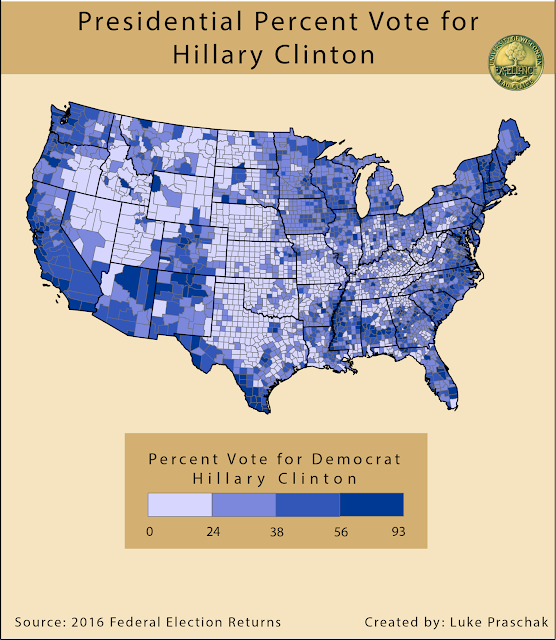GPS Mapping Project
Overview:
The goal of this exercise was to deploy another geodatabase to Arc Collector with the intention to answer a research question of my own. The research question applied looks to analyze how the condition as well as the type of sidewalk differs in a frequent and non-frequent flooded areas.
The study area takes place on the Chippewa River State Trail, that is within the student housing area (west side of Chippewa River), and a portion of the University of Wisconsin-Eau Claire campus. This trail, used by local residents and college students, is regularly walked, biked, in-line staked, etc.
Results/Conclusion:
Sidewalk cracks can seem to a minor annoyance, but they can actually be a serious hazard. Cracks on a sidewalk can lead to pedestrians tripping or potentially bring a skateboarder or biker to an unexpected halt, all in which could lead to an injury. So maintaining sidewalks, especially ones that are used quite frequently becomes an important necessity for maintaining proper sidewalk etiquette.
A common way sidewalks crack is due to thermal expansion. Thermal expansion occurs when the material, in this case concrete and asphalt, heats up, causing expandsion, and when it cools contraction takes place. In order to prevent cracks, expansion joints are used to minimize the cracking, which are cut into the material allowing the material to then expand and contract in a smaller surface area. Cracks can also be sealed to resist the spreading apart of material. Another way cracks form are from poor compaction of soil laid underneath the sidewalk. Poor compaction can lead to sinking of sidewalk and cracking of material.
When recording the data, much of the material recorded came to be asphalt. Most of the asphalt documented was either not damaged or lightly damaged. The non-damaged asphalt was all new and the lightly damaged reported only had a few cracks with many unsealed. The light and moderate damaged sidewalks in areas with no frequent floods suffer more from thermal expansion leaving multiple unsealed cracks. Areas where the trails runs through a flooded region the sidewalk suffers from resettlement. This is due to water being able to seep through the sediment making it lose causing removal of underlying sidewalk material. Most of the sidewalks located in flood regions have no damage because the asphalt is new, so few areas were able to present the resettlement process. A heavily damaged sidewalk, only a few were recorded, presented potholes in the material, which can be serious hazards to anyone.
Sidewalks, especially trails are important for recreational use and maintaining good quality sidewalks becomes a pleasurable feeling for the people using the trail. To conclude the data determines that flooded areas suffer from resettlement and non-flooded area experience thermal expansion. With this information a time analysis can be performed to determine how long it with take for the material crack and then to be resealed or replaced.
The goal of this exercise was to deploy another geodatabase to Arc Collector with the intention to answer a research question of my own. The research question applied looks to analyze how the condition as well as the type of sidewalk differs in a frequent and non-frequent flooded areas.
The study area takes place on the Chippewa River State Trail, that is within the student housing area (west side of Chippewa River), and a portion of the University of Wisconsin-Eau Claire campus. This trail, used by local residents and college students, is regularly walked, biked, in-line staked, etc.
Results/Conclusion:
Sidewalk cracks can seem to a minor annoyance, but they can actually be a serious hazard. Cracks on a sidewalk can lead to pedestrians tripping or potentially bring a skateboarder or biker to an unexpected halt, all in which could lead to an injury. So maintaining sidewalks, especially ones that are used quite frequently becomes an important necessity for maintaining proper sidewalk etiquette.
A common way sidewalks crack is due to thermal expansion. Thermal expansion occurs when the material, in this case concrete and asphalt, heats up, causing expandsion, and when it cools contraction takes place. In order to prevent cracks, expansion joints are used to minimize the cracking, which are cut into the material allowing the material to then expand and contract in a smaller surface area. Cracks can also be sealed to resist the spreading apart of material. Another way cracks form are from poor compaction of soil laid underneath the sidewalk. Poor compaction can lead to sinking of sidewalk and cracking of material.
When recording the data, much of the material recorded came to be asphalt. Most of the asphalt documented was either not damaged or lightly damaged. The non-damaged asphalt was all new and the lightly damaged reported only had a few cracks with many unsealed. The light and moderate damaged sidewalks in areas with no frequent floods suffer more from thermal expansion leaving multiple unsealed cracks. Areas where the trails runs through a flooded region the sidewalk suffers from resettlement. This is due to water being able to seep through the sediment making it lose causing removal of underlying sidewalk material. Most of the sidewalks located in flood regions have no damage because the asphalt is new, so few areas were able to present the resettlement process. A heavily damaged sidewalk, only a few were recorded, presented potholes in the material, which can be serious hazards to anyone.
Sidewalks, especially trails are important for recreational use and maintaining good quality sidewalks becomes a pleasurable feeling for the people using the trail. To conclude the data determines that flooded areas suffer from resettlement and non-flooded area experience thermal expansion. With this information a time analysis can be performed to determine how long it with take for the material crack and then to be resealed or replaced.






Comments
Post a Comment